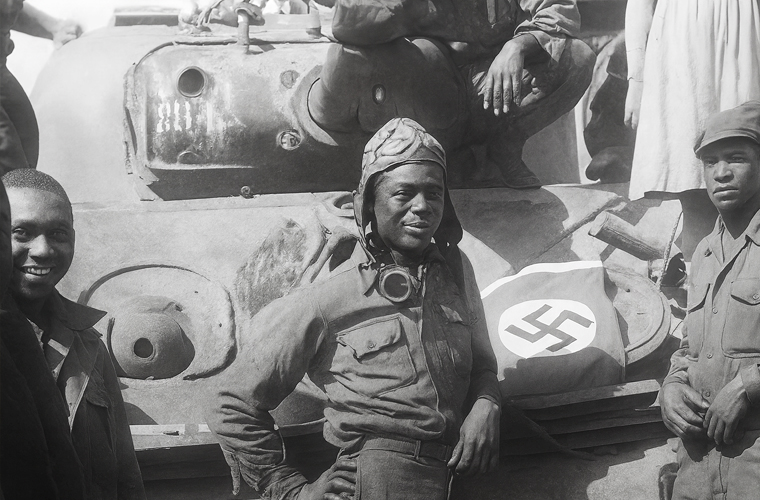At 95, retired Cpl. James W. Baldwin stands among the last surviving Black liberators—those courageous African American soldiers who stormed into the Netherlands in 1945, battling Nazis and helping to free the Dutch from the grip of German occupation. With many of his Army comrades long gone, Baldwin’s memories of that pivotal push in the war’s final months remain vivid. He still recalls the thunder of his 81mm mortar, unleashing fire on Nazi forces that had choked the Netherlands for years. The country had endured unimaginable suffering: thousands of Dutch Jews deported to concentration camps, and a populace scarred by genocide, famine, and starvation.
“We took 23 cities in three days,” Baldwin reflected, serving with the all-Black U.S. Army 784th Tank Battalion. “We were really moving. We were taking the cities—killing Germans, running them out. We came in and freed them. We liberated them. To know I had a role in the liberation of Holland means a lot.”
Last week in Washington, D.C., the Embassy of the Netherlands paid tribute to Baldwin and hundreds of other Black WWII veterans, marking the 75th anniversary of the liberation. In a certificate of appreciation presented to him, the embassy wrote: “The citizens of the Kingdom of the Netherlands express their sincere appreciation and gratitude for your sacrifice, courage, and willingness to fight for freedom while enduring the hardships of war… Seventy-five years later, the footprints of courageous men like you are still found in our thriving economy, our stable government, and in our hearts and minds. Freedom sways in the wind while our flag flutters in peace. We will never forget.”
The Netherlands‘ liberation followed the Nazi invasion of 1940 and gained momentum after the Allied D-Day landings at Normandy on June 6, 1944. Pushing eastward, Allied forces expelled Germans from France and Belgium, reaching Dutch soil by September 1944.
“When the fighting ended, Europe broke free of Nazi occupation, and thousands upon thousands of soldiers had died—including 8,291 Americans buried in the cemetery at Margraten,” said Commodore Paul Herber, the embassy’s defense attaché. “In many ways, the cemetery is to the Netherlands what Arlington National Cemetery is to the United States. It is hallowed ground. One cannot walk through Margraten without feeling the sacrifices American soldiers made to free Europe and the Netherlands.”
For decades, Dutch families have “adopted” each of the graves at the Netherlands American Cemetery in Margraten, tending them with unwavering care. Every year, they lay flowers and offer quiet tributes. “They pay respect and honor soldiers’ sacrifices,” Herber noted. “Many Dutch families have connected with the soldiers’ families, developing bonds and forging friendships across the Atlantic.”
Yet for the 172 African American soldiers interred there, these adoptions have faced unique hurdles. Segregated units and incomplete records often erased their stories from history, making it harder to locate living relatives in the U.S.
In 2009, the Netherlands launched the Black Liberators Project, partnering with U.S. historians to identify descendants of those 172 heroes who fell defeating the Nazis. “We are determined to find every one of the families,” said Ric Murphy, national vice president for history at the Afro-American Historical and Genealogical Society. “When you think about these men who went into World War II—coming from the segregated South, predominantly—many went into battle so they could be treated like men and come out with certain dignity. They went to a foreign land to fight a foreign war to liberate foreign people. And many who survived came back to a segregated South, to an environment where they themselves were not treated as free men.”
Even among survivors, Murphy added, some returned home and never spoke of the war, leaving family stories untold. Hannah Scruggs, a genealogy reference assistant at the National Museum of African American History and Culture’s Robert F. Smith Explore Your Family History Center, urges relatives of WWII veterans to preserve those narratives. “Ask questions of your family members who are getting older,” she advised. “I encourage family members who don’t want to talk—who have seen truly horrific things—please write it down.”
The project has already connected with families of 24 Black soldiers, including LaVonne Taliaferro-Bunch, whose great-uncle Lynwood Taliaferro died in the Netherlands on May 31, 1945. “His body rests in the Netherlands at the Margraten Cemetery,” Herber said. “For many, this is an unknown story—not only here but in the Netherlands. We want everyone to know the Netherlands has not forgotten the efforts of these heroes. We will continue these efforts and find the descendants of those who paid the ultimate sacrifice for our liberation.”
In 2015, Baldwin himself received a poignant letter from G.H. Beusker of the Netherlands. Baldwin’s battalion had liberated the town of Venlo on March 1, 1945. “My mother, who was 9, was looking out a window and saw the first African American soldiers slowly coming down the street, close to the houses,” Beusker wrote. “At the time she had already been hiding for weeks, with the rest of her family in the house of an aunt.”
Beusker recalled the British shelling of German positions on the “Venlo side” of the River Meuse, along with relentless Allied bombings of the bridge and a Luftwaffe base east of town throughout 1944. The Germans eventually demolished the bridge in November 1944. “Those bombings claimed many civilian casualties,” Beusker noted, “but never have I heard grievances by the generation that experienced the war against the Allies. Only gratitude.”

